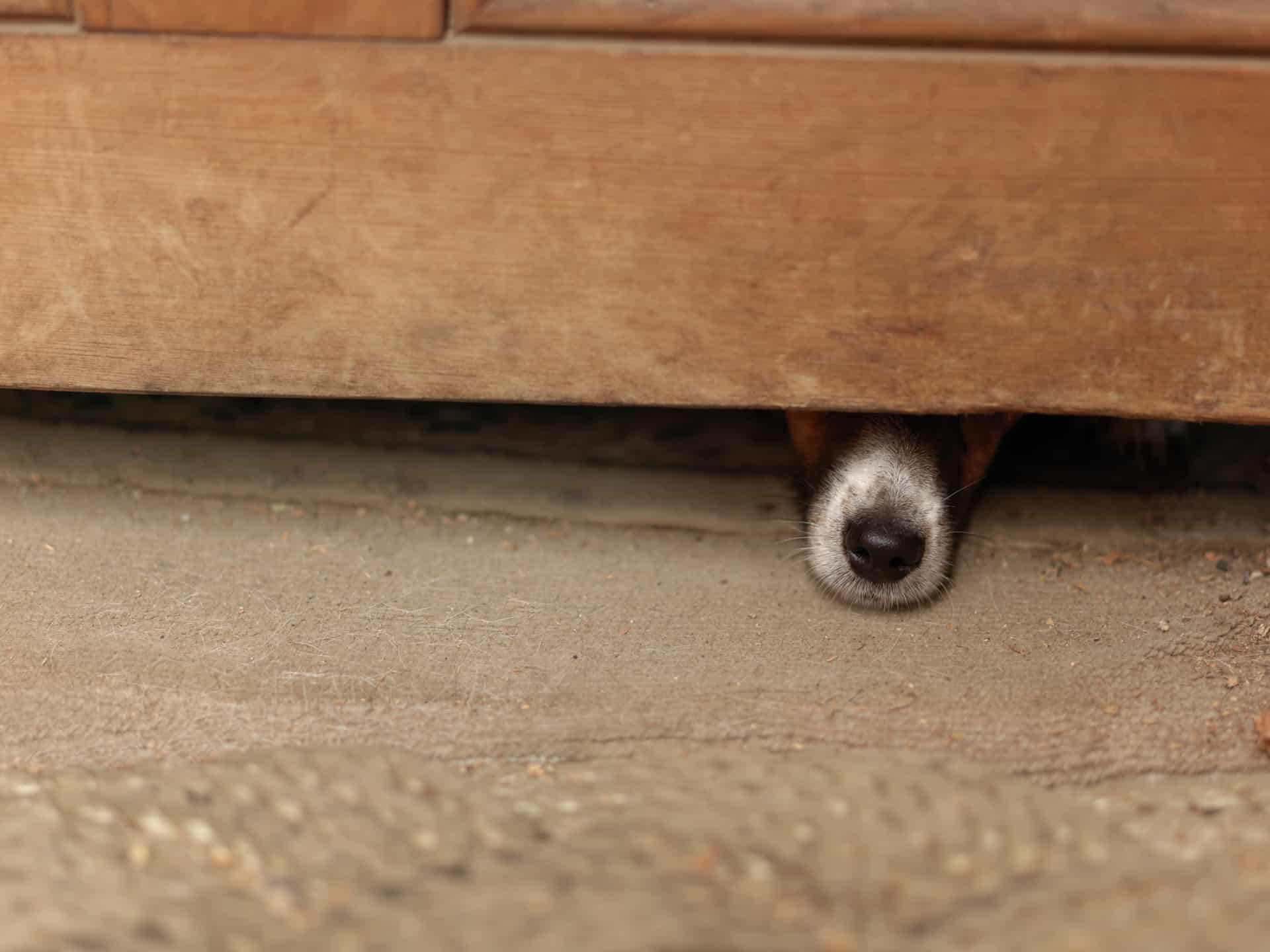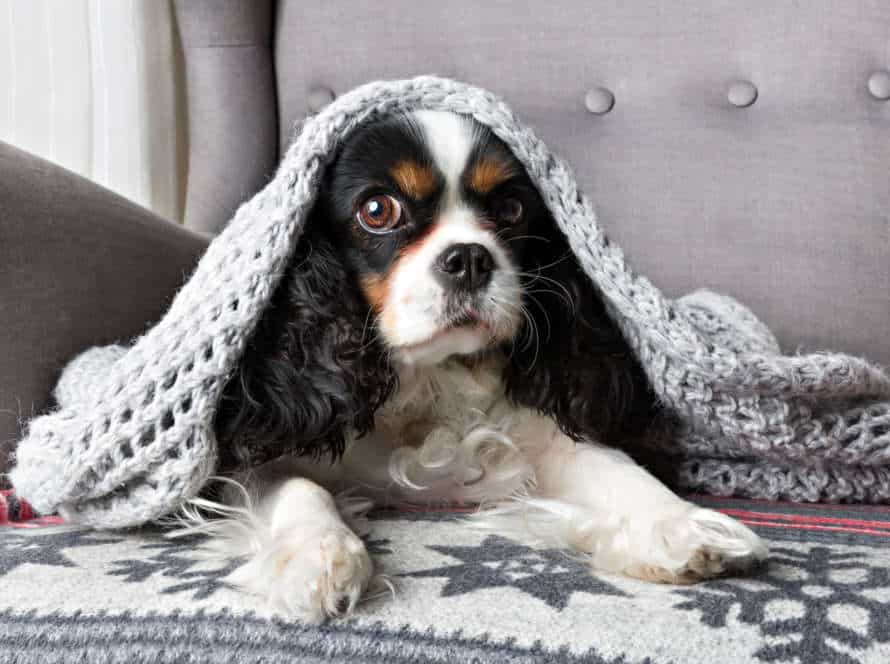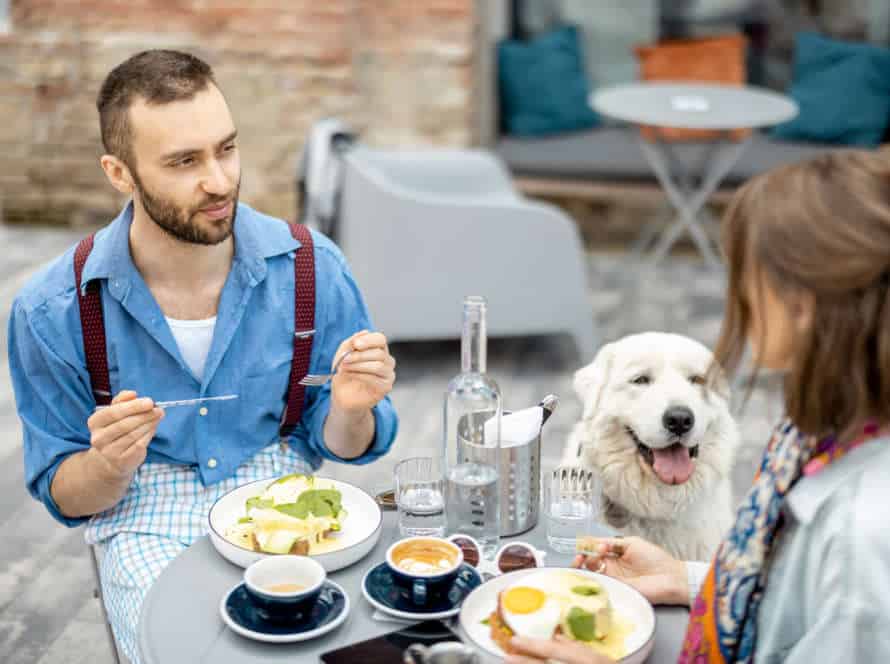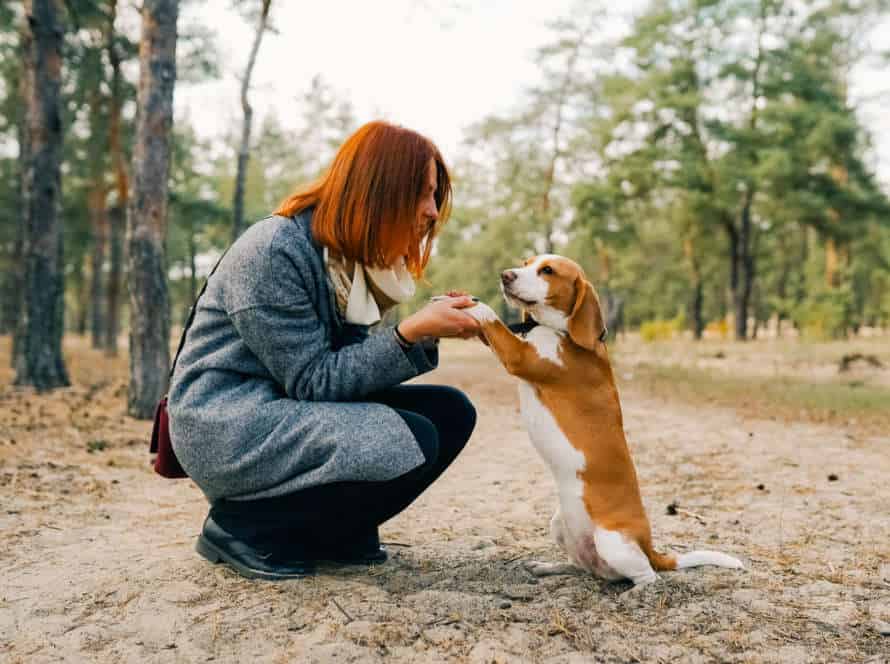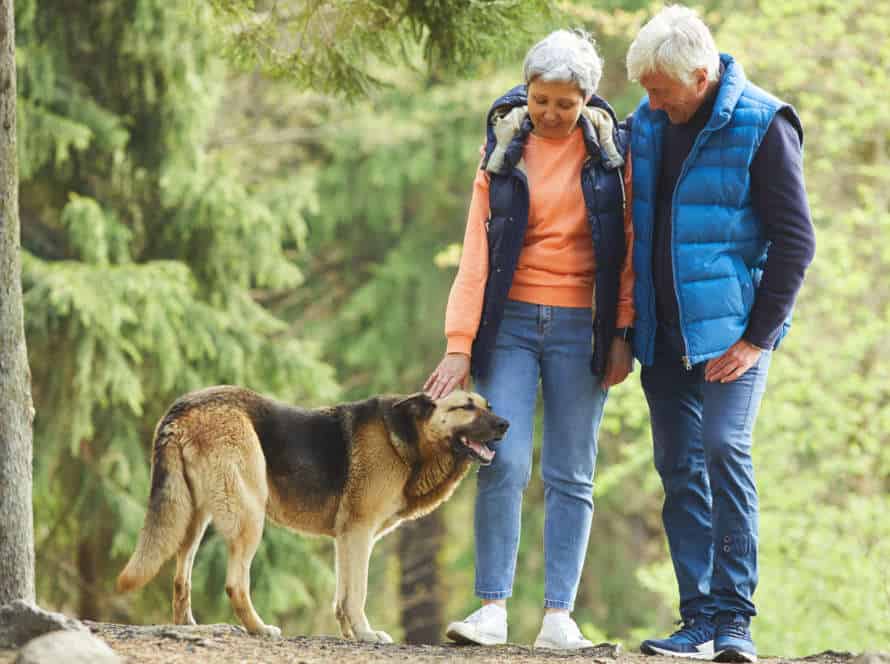Building Trust with a Fearful Dog: A Step-by-Step Guide
Creating trust with a scared pooch can take a while. But it’s essential to form a strong, positive bond between you and your canine companion. Here’s a guide to help you:
- Give your dog its own space.
- Train with rewards.
- Be patient and don’t make them do stuff.
- Stay consistent with a routine.
- Remove any triggers of fear and distract them.
By sticking to these steps, you can set up a faithful and trusting relationship with your pup. Trust doesn’t come easy but it’s worth the effort.
Understanding Fearful Dogs
Fearful dogs need special attention to gain trust and build a strong relationship. To do this, we must comprehend their behavior and the cause of their fear. Here is a step-by-step guide on understanding and taking care of fearful dogs:
Signs of fear and anxiety in dogs
Dogs may show signs of fear & anxiety. Recognize them! These signs can include:
- Trembling
- Barking/Whining
- Tucking Tail
- Avoiding Eye Contact
- Hiding/Cowering
- Aggression/Destructive Behavior
- Panting/Drooling
- Yawning/Licking Lips
Understanding these signs can help prevent triggers that cause anxiety. Building trust is essential for a fearful dog. Follow a step-by-step guide to help your dog build confidence & overcome their fears.
Causes of fear in dogs
Fear is a normal emotion in dogs, but can become a problem when it’s too much. Here are some common causes of fear in dogs that pet owners should know:
- Genetics: Certain breeds are more sensitive or anxious due to their genetic makeup.
- Lack of Socialization: Puppies that haven’t been exposed to different sights, sounds and experiences are more likely to be scared.
- Traumatic experience: Dogs can also be scared due to abuse, neglect or a disaster.
- Medical issues: Fear and anxiety could be caused by medical conditions like hearing loss, vision problems or cognitive decline.
It’s important to understand why your dog is scared. Training, socialization, medication or understanding their needs can help build trust. Patience and consistency are key.
Importance of building trust with a fearful dog
Building trust is key for a fearful pup. They may act strangely, like hiding or being aggressive, or try to escape when spooked. To build trust, try these steps:
- Patience! Give time for the pup to adjust to its surroundings. Avoid things that make them uneasy.
- Positive reinforcement! Offer treats and praise when they’re doing good.
- Consistency! Set up a routine and rules to make them feel secure.
- Slow introduction! Introduce new environments and people slowly, so they can acclimate and have a good experience.
- Lastly, be aware of their body language, and avoid anything that triggers fear.
Building Trust with a Fearful Dog
Gaining trust takes lots of patience and kindness. It won’t happen overnight, but can be so worth it in the end. To build trust with a fearful pup, you need to be kind and use positive reinforcement. Here’s how to do it:
- Give them their space: If your new furry friend is scared, don’t rush them to come to you. Allow them to have their own space and let them approach you on their own time.
- Use positive reinforcement: When your pup does something good, reward them with a treat or lots of love and praise. This will teach them that good things happen when they trust you.
- Let them sniff you: A dog’s sense of smell is their strongest sense. Letting them get to know your scent will help them become more comfortable around you.
- Be patient: Like we said earlier, gaining trust takes time. Be patient with your pup and don’t rush the process.
Key steps for building trust with a scared dog.
Creating a Safe Space for the Dog
Creating a Safe Space for your pup is important for building trust with a frightened dog. Here’s how to make one:
- Pick a peaceful, secure place with few distractions.
- Put in their favorite toys, blankets and treats to make the area a pleasant spot.
- Let them explore the space at their own speed.
- Spend time with your pup in the space, doing calming activities like reading or listening to music.
- Don’t make loud sounds or sudden movements that may scare them.
Making a Safe Space gives your pup a special area to relax and feel secure when they’re scared. This helps strengthen the bond between you and your pup.
Developing a Positive Association with Humans
Establishing a good relationship with humans is essential to build trust with your scared pooch. Follow these steps to create a positive bond with your furry pal:
- Step 1: Begin at your pup’s speed. Provide space and let them come to you on their own. Don’t force them to interact with you.
- Step 2: Utilize treats and positive reinforcement. Offer snacks to encourage your pup to get closer to you and attach you with cheerful experiences.
- Step 3: Keep meetings short. Keep meetings with your pup brief to avoid overwhelming them.
- Step 4: Use a gentle and reassuring tone. When conversing with your pup, speak in a gentle and calming voice to help them relax.
- Step 5: Respect your pup’s limits. Don’t push your pup to interact with you if they appear disturbed or scared.
By following these steps, you can build a positive association with your scared pup and establish a trusting relationship with them.
Communicating Effectively with the Dog
If you own a fearful pup, it’s essential to talk to them properly. To establish trust and a good bond, here’s what to do:
- Be patient. Move cautiously and let your dog come to you. No punishments.
- Utilize positive reinforcement. Give treats, compliments, and playtime when your pup does what you ask.
- Come up with a routine. Have regular meal times, walks, and fun time. This will give them a feeling of stability.
- Use body language. Avoid eye contact, and stand relaxed. Speak softly and calmly.
- Get professional help. If your pup is really scared or violent, get advice from an experienced trainer or animal behaviorist. With enough patience and consistency, you can have a great relationship with your pet.
Implementing Positive Reinforcement Techniques
Positive reinforcement is key when constructing trust with a fearful pup. It’s a type of learning where we reward desirable behaviour, while ignoring or discouraging undesirable behaviour. Utilizing positive reinforcement techniques can help a fearful pooch build confidence over time. Let’s explore how to use these techniques effectively to help a fearful doggy!
Using Treats to Create a Positive Association
Using treats to make a connection can be a great way to help fearful dogs. Here’s how:
- Have lots of your pup’s favorite treats.
- Offer the treat from far away – no sudden moves or eye contact.
- If your pup takes the treat, praise and invite them closer.
- Do this several times, slowly reducing the distance between you.
- In time, your dog will see treats as a happy thing.
Be patient and respectful when dealing with fearful pups – it’s best for both of you!
Rewarding Good Behavior with Praise and Affection
Train a fearful pup? Use positive reinforcement to build trust! Praise and attention? Yep, that works! Dogs are social animals; they love being praised with a high-pitched, enthusiastic tone. Give physical affection, like petting and scratching behind the ears. This will reward your pup for good behavior. Positive reinforcement creates a safe and welcoming atmosphere. It’ll lead to a more joyful and healthier connection between you and your furry pal.
Consistency is key! Use positive reinforcement to build trust and promote good behavior in your dog.
Consistency and Repetition for Long-Term Results
Consistency and repetition are essential for long-term success with positive reinforcement techniques for building trust with fearful dogs. Patience and persistence are key for helping your pup conquer their anxieties. Here’s how:
-
Start easy and practice daily. Increase difficulty gradually.
-
Use the same voice and body language.
-
Reward good behaviour with treats or verbal praise.
-
Regularly repeat training exercises. Strengthen good behaviour and eradicate bad.
-
Patience is vital. Don’t scold or hit your pet. This may worsen their behaviour.
With patience and persistence, you can help your fearful pup overcome fear and form a strong bond.
Pro tip: Remain consistent in training, be patient with your pup and avoid punishment as it could backfire.
Seeking Professional Help
Trying to build trust with a scared pup? Get the help of an experienced behaviorist! They can give very useful tips to both the owner and dog. They’ll assess the pup’s character and create a special training plan. Plus, they’ll also provide emotional support for the one trying to make a connection with their fearful pet. Let us explore the necessity of pro help for scared doggos.
Knowing When to Seek a Professional
Building trust with a fearful dog can be tricky. You know your pet best and if they show extreme anxiety or aggression, it’s best to get a professional’s help. Here are some signs that you need a pro:
- If your dog’s anxieties are making them aggressive or putting them in danger.
- If their anxieties affect their eating, sleep and behaviour.
- If your attempts to build trust aren’t working, and their behaviour is getting worse.
A pro dog trainer or behaviour specialist can help you build trust using positive reinforcement and training methods that suit your pup. Remember, seeking help is a sign of being a responsible pet parent and it can improve your dog’s life.
Finding Certified Dog Trainers and Behaviorists
To get professional help with your pup’s behavioral problems, such as fear, aggression or anxiety, finding a certified dog trainer or behaviorist is a must. Here’s how to locate a reliable one:
- Look for trainers or behaviorists certified by organizations like Certification Council for Professional Dog Trainers (CCPDT) or International Association of Animal Behavior Consultants (IAABC).
- Ask your vet, animal shelter, or other pet owners who have already worked with a trainer or behaviorist for recommendations.
- Do some research. Check the credentials, experience and reviews of the trainer or behaviorist before hiring them.
- Have an initial consultation to discuss your pooch’s issues and the trainer/behaviorist’s methods.
By getting a certified dog trainer or behaviorist, you can make sure your pup gets the professional help they need to overcome their issues, build trust and live a content life.
Understanding the Role of Medication in Some Cases
Sometimes, medication can be a big help to scared pooches. But, it’s not a cure all. Meds must be used with behavior training and professional help.
Common prescription meds are anti-anxiety drugs or antidepressants. They help dogs stay calm and less fearful.
Before starting any medication, get advice from a vet. They will decide the right dosage and type. It may also need adjusting as your pup makes progress.
Remember, meds help, but can’t replace training and building trust.
Patience and Persistence in Building Trust
Building trust with a fearful pup requires time, patience and perseverance. A trusting connection may take weeks or even months, contingent on the pup’s past experiences and the level of fear. To develop a trusting relationship, you must be willing to put in the work and remain consistent with creating a bond.
Setting Realistic Expectations
When building trust with a scared dog, set realistic expectations. Patience and perseverance are essential for success. Here are some things to remember:
- Trust-building takes time and can’t be hurried.
- Create a routine that uses positive reinforcement to build a bond.
- Expect hiccups and alter your approach to suit your pup.
- Every dog is different, so some may need more time, while others may be more accepting.
- Realistic expectations will help you stay positive and make your pup feel safe.
Celebrating Small Wins
Celebrate small successes when building trust with a scared pup! It could be just eye contact or a nose touch. These are signs of progress to a better relationship.
Here are ways to celebrate:
- Praise – Use positive reinforcement. Speak kindly, give pets, and reward with treats.
- Play – Have fun with tug-of-war or fetch.
- Walks – Take your pup for a calming walk.
Stay patient and persistent. Celebrate small successes to motivate and reinforce positive behavior!
Maintaining a Positive Attitude and Mindset
Stay positive and you’ll build trust with your fearful pup! Patience and persistence are must-haves. Here are tips to help you out:
- Approach them slowly and calmly – no sudden moves or loud noises.
- Use treats and positive reinforcement to reward good behavior.
- Let them set the pace, don’t force them to interact with people or other dogs.
- Spend time with your pup regularly, creating a routine of positive activities.
- Be patient and consistent, building trust takes time and effort.
Maintaining a positive attitude is essential for building trust with a fearful dog. With this, you can help them feel safe and secure, leading to a strong bond based on trust and mutual respect.
Frequently Asked Questions
1. How do I start building trust with my fearful dog?
The first step in building trust with a fearful dog is to be patient and understanding. Start by creating a safe and inviting space for your dog, and offer them treats and positive reinforcement for good behavior.
2. Can I use punishment to get my fearful dog to behave?
No, punishment will only make your dog more fearful and will not build trust. Instead, focus on positive reinforcement and building a strong bond with your dog.
3. What if my dog has had a traumatic experience in the past?
It is crucial to work with a qualified dog behaviorist who can help you create a training plan that is tailored to your dog’s specific needs. They can help you carefully introduce positive experiences to help your dog overcome their past trauma.
4. How long does it take to build trust with a fearful dog?
Every dog is different, and there is no set timeline for building trust. It takes patience, consistency, and dedication to help your dog feel safe and secure. Some dogs may take weeks or months to fully trust their human companions.
5. Should I try to socialize my fearful dog?
Socialization is vital for every dog, but it is essential to do it slowly and carefully with a fearful dog. Consult with a qualified behaviorist to create a socialization plan that suits your dog’s temperament and needs.
6. What if my fearful dog shows signs of aggression?
If your dog exhibits aggressive behavior, it is crucial to seek the help of a qualified dog behaviorist immediately. Aggression can be a sign of fear, anxiety, or a more severe issue, and it is best to address it with the help of an expert.

